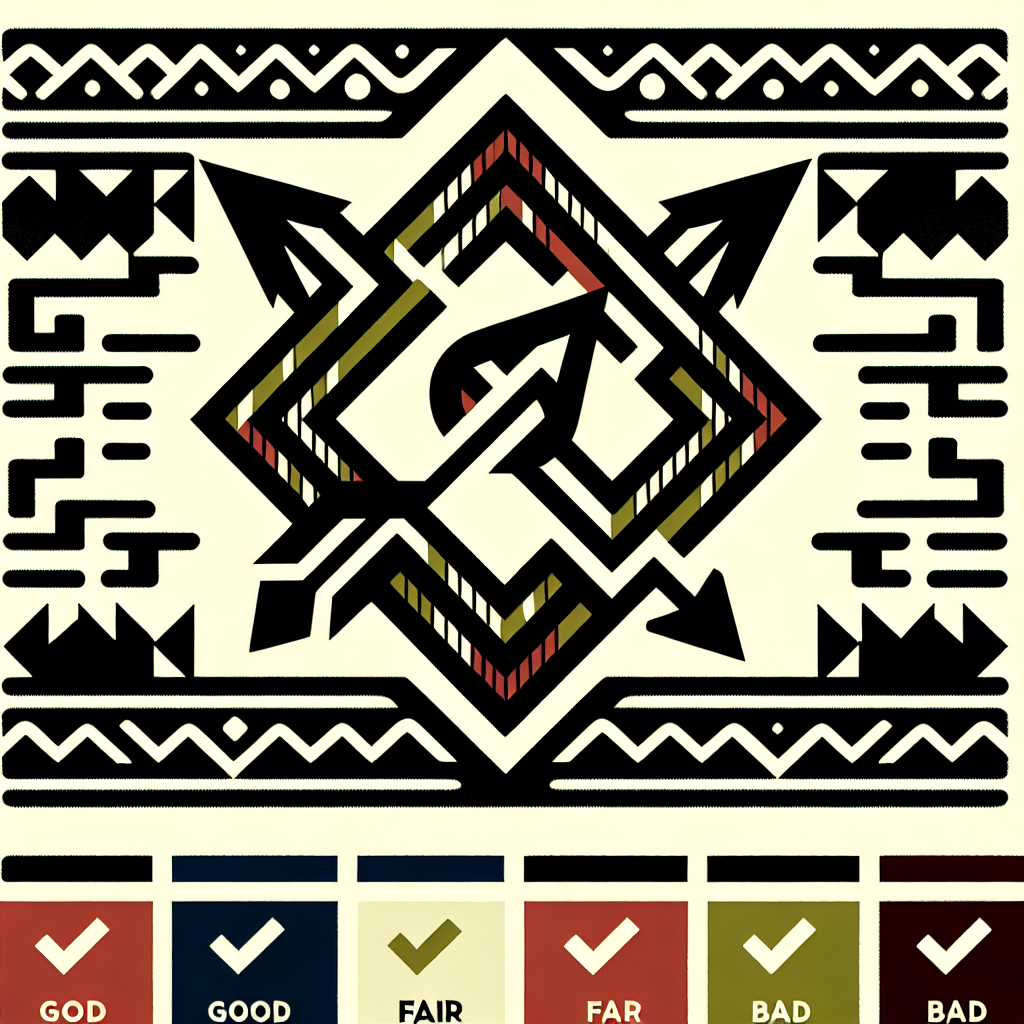Tribal Loans For Bad Credit

“Empowering Financial Inclusion – Tribal Loans For Bad Credit.”
Tribal Loans For Bad Credit are financial products offered by lenders owned by Native American tribes and operated on sovereign tribal land. These loans are typically available to individuals with poor credit histories who may not qualify for traditional loans from banks or other financial institutions. Tribal lenders may follow their own set of regulations and lending criteria, which can differ from state and federal laws. As a result, they often provide loans with less stringent credit requirements, making them an accessible option for borrowers with bad credit. However, it’s important to note that these loans can come with high-interest rates and fees, and borrowers should carefully review the terms and conditions before proceeding.
Struggling with bad credit and in need of financial assistance? Don’t let your credit score hold you back any longer! Explore your options with Tribal Loans for Bad Credit. Click here to find flexible, understanding lenders ready to work with you: Get Your Tribal Loan. Act now to secure the funds you need to take control of your financial future!
Understanding Tribal Loans For Bad Credit: An Overview
Tribal Loans For Bad Credit: Understanding the Nuances
In the realm of personal finance, individuals with less-than-stellar credit histories often find themselves in a conundrum when seeking loans. Traditional financial institutions typically have stringent criteria, which can be a formidable barrier. However, an alternative has emerged in the form of tribal loans, which are becoming increasingly popular for those with bad credit. These loans are offered by lenders based on tribal land and operate under the sovereignty of their respective Native American tribes.
The concept of tribal loans hinges on the principle of tribal sovereignty, which grants these entities the autonomy to govern themselves and create their own regulations. As a result, tribal lenders are not bound by the same restrictions as state-licensed lenders, which allows them to offer loans to individuals with poor credit scores who might otherwise be ineligible for credit. This flexibility is a beacon of hope for many, but it is crucial to approach these loans with a comprehensive understanding of their terms and implications.
One of the most appealing aspects of tribal loans is their accessibility. The application process is typically straightforward and can be completed online, providing a convenient option for those in urgent need of funds. Moreover, the approval process is often expedited, with funds being disbursed swiftly, sometimes within the same business day. This efficiency is particularly beneficial for borrowers facing emergency expenses or unexpected financial shortfalls.
Despite these advantages, it is imperative to acknowledge that tribal loans can come with significant costs. Because tribal lenders are not subject to state-imposed interest rate caps, the loans they offer often carry high-interest rates and fees. Consequently, the cost of borrowing can be substantially higher than that of conventional loans, leading to a cycle of debt if not managed judiciously. Borrowers must carefully evaluate the loan terms, including the annual percentage rate (APR), repayment schedule, and any additional charges, to ensure they can meet the obligations without exacerbating their financial situation.
Another critical consideration is the legal landscape surrounding tribal loans. The unique status of tribal lenders means that they operate under the legal framework of their tribe rather than state law. This can lead to potential challenges in resolving disputes, as borrowers may not have the same legal protections as they would with state-licensed lenders. It is essential for individuals to research the lender’s background, read reviews, and understand the dispute resolution mechanisms in place before entering into a loan agreement.
Furthermore, the impact of tribal loans on credit scores should not be overlooked. Just like with traditional loans, failure to repay a tribal loan can result in negative reporting to credit bureaus, further damaging one’s credit. Conversely, consistent and timely repayment can help improve a borrower’s credit profile. Therefore, it is crucial for individuals to consider their ability to repay the loan in full and on time before proceeding.
In conclusion, Tribal Loans For Bad Credit offer a viable option for those who find themselves excluded from traditional lending avenues. They provide quick access to funds and a less rigorous credit check process. However, the potential benefits must be weighed against the high costs and unique legal considerations. By thoroughly understanding the terms and implications of tribal loans, borrowers can make informed decisions that align with their financial needs and capabilities. As with any financial commitment, due diligence and a clear repayment strategy are the keys to navigating the complexities of tribal lending without compromising one’s financial future.
The Pros and Cons of Tribal Loans For Bad Credit

Tribal Loans For Bad Credit: The Pros and Cons
In the financial landscape, tribal loans have emerged as a controversial yet vital option for individuals with bad credit. These loans are offered by lenders based on tribal land and operated by Native American communities. They operate under their own legal frameworks, which can be distinct from state regulations that govern traditional lending institutions. As such, tribal loans can provide a lifeline for those who struggle to secure financing through conventional means due to poor credit histories. However, like any financial product, they come with their own set of advantages and disadvantages that potential borrowers must carefully consider.
One of the primary benefits of tribal loans is their accessibility. For individuals with bad credit, obtaining a loan from a bank or credit union can be an insurmountable hurdle. Tribal lenders, on the other hand, may not require a credit check or may be willing to consider other factors beyond credit scores when making lending decisions. This inclusivity enables people with less-than-perfect credit to access funds that can be crucial for emergencies, consolidating debt, or making significant purchases.
Moreover, the application process for tribal loans is often streamlined and user-friendly. Many tribal lenders offer online applications that can be completed in minutes, and the approval process can be swift, with funds potentially being disbursed within the same day. This expediency can be a significant advantage when time is of the essence, and immediate financial relief is needed.
Despite these benefits, tribal loans come with significant drawbacks that must be weighed carefully. One of the most glaring is the cost. Tribal loans can carry exorbitantly high-interest rates and fees, which can trap borrowers in a cycle of debt. The lack of oversight from state laws means that tribal lenders can charge rates that would otherwise be illegal in many states. Consequently, while these loans can provide immediate relief, they can also lead to long-term financial strain if not managed properly.
Another concern is the legal ambiguity surrounding tribal loans. Because they are offered by lenders operating under the sovereignty of Native American tribes, they may not be subject to the same consumer protection laws that govern traditional lenders. This can leave borrowers with fewer recourses in the event of disputes or predatory lending practices. It is crucial for potential borrowers to understand the terms and conditions of their loan agreement fully and to be aware of the legal framework in which the lender operates.
Furthermore, the reliance on tribal loans can hinder the development of a healthy credit history. Since some tribal lenders do not report to credit bureaus, timely payments may not contribute to improving a borrower’s credit score. This lack of reporting means that while tribal loans can offer short-term solutions, they may not help in building the credit necessary for more favorable loan terms in the future.
In conclusion, Tribal Loans For Bad Credit can serve as a double-edged sword. They offer an accessible and rapid source of funding for those who might otherwise be excluded from the traditional financial system. However, the high costs associated with these loans and the potential legal complexities demand that borrowers exercise caution. It is imperative for individuals considering a tribal loan to conduct thorough research, understand the full implications of the loan agreement, and consider alternative financing options before committing to a path that could impact their financial well-being for years to come.
How to Apply for Tribal Loans For Bad Credit: A Step-by-Step Guide
Tribal Loans For Bad Credit: A Step-by-Step Guide
In the realm of personal finance, individuals with bad credit often face significant hurdles when seeking loans. Traditional financial institutions typically have stringent credit requirements, leaving those with less-than-perfect credit scores searching for alternative lending solutions. One such alternative is tribal loans, which are offered by lenders owned by Native American tribes and operated on tribal land. These loans can be a viable option for those with bad credit due to their more flexible lending criteria. However, it is essential to approach the application process with a clear understanding of the steps involved.
The initial step in applying for a tribal loan is to conduct thorough research. Prospective borrowers should investigate various tribal lenders to compare interest rates, repayment terms, and any additional fees. It is crucial to ensure that the lender is legitimate and has a good reputation. This can be ascertained by checking their standing with the Native American Financial Services Association (NAFSA) or reading reviews from other borrowers.
Once a reputable lender has been identified, the next step is to review their eligibility criteria. Unlike conventional banks, tribal lenders may have different requirements that could be more accommodating for individuals with bad credit. Common criteria may include proof of income, employment status, and citizenship or residency. It is important to gather all necessary documentation beforehand to streamline the application process.
Following the preparation of documents, the application process can begin. Many tribal lenders offer online applications, which can be convenient and quick. The application will typically ask for personal information, such as name, address, and social security number, as well as financial details like income level and banking information. It is imperative to provide accurate and honest information to avoid any delays or issues with loan approval.
After submitting the application, there is often a waiting period while the lender reviews the information. During this time, they may perform a soft credit check, which does not affect the credit score, to verify the borrower’s financial history. If additional information is required, the lender will reach out to the applicant directly. Prompt responses can help expedite the approval process.
If the application is approved, the lender will present a loan agreement that outlines the terms of the loan, including the interest rate, repayment schedule, and any fees. It is essential to read this agreement carefully and understand all the terms before signing. If there are any questions or concerns, it is advisable to discuss them with the lender to ensure full comprehension of the obligations.
Upon agreement to the terms, the loan funds are typically disbursed quickly, sometimes within 24 hours. The borrower will then be responsible for adhering to the repayment schedule as outlined in the loan agreement. Timely repayment can not only resolve the immediate financial need but also help improve the borrower’s credit score over time.
In conclusion, applying for a tribal loan with bad credit involves a series of steps that require careful consideration and due diligence. By researching lenders, preparing necessary documentation, completing an application, and thoroughly reviewing loan terms, individuals with bad credit can access the funds they need while also taking steps toward financial recovery. It is important to remember that while tribal loans can offer a lifeline, they should be approached with caution and responsibility to ensure they fit within one’s personal financial strategy.
Q&A
1. What are Tribal Loans For Bad Credit?
Tribal Loans For Bad Credit are financial products offered by lenders owned by Native American tribes and operated on tribal land. These loans are typically short-term, high-interest loans that are available to individuals with poor credit scores who may not qualify for traditional loans.
2. How do tribal loans differ from traditional loans?
Tribal loans differ from traditional loans in several ways. They are offered by tribal lenders who operate under their own sovereign laws rather than state regulations, which can lead to higher interest rates and fees not bound by state-imposed limits. Additionally, they often have more lenient credit requirements, making them accessible to individuals with bad credit.
3. Are there risks associated with taking out a tribal loan for bad credit?
Yes, there are risks associated with taking out a tribal loan for bad credit. These include very high-interest rates and fees, shorter repayment terms, and the potential for debt cycles due to rollovers and additional fees. Borrowers may also have limited legal recourse in the event of disputes, as tribal lenders may not be subject to state laws. It’s important to read the terms and conditions carefully and consider alternative options before taking out a tribal loan.Conclusion: Tribal Loans For Bad Credit are financial products offered by lenders owned by Native American tribes and operated on tribal land. These loans can be an alternative for individuals with poor credit scores who may struggle to secure loans from traditional financial institutions. However, they often come with high-interest rates and fees due to the higher risk associated with lending to borrowers with bad credit. Additionally, because tribal lenders are subject only to tribal laws and not state or federal regulations, borrowers may have limited protections and recourse in the event of disputes. It is crucial for potential borrowers to thoroughly research and understand the terms of any tribal loan and consider all other options before committing to this form of borrowing.



